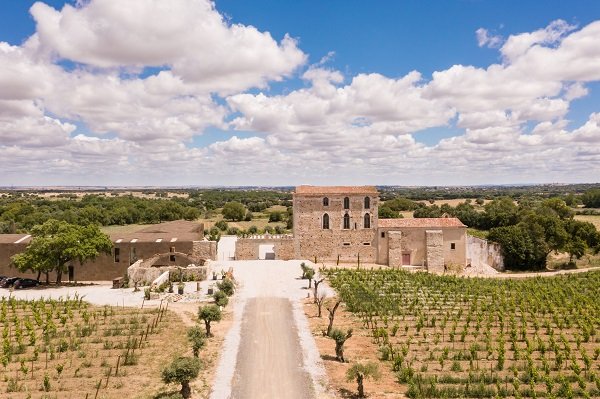A lot of attention is being paid these days to Évora, the main city of Portugal’s Alentejo. It was just named the European Capital of Culture for 2027. The European Capital of Culture is an initiative that focuses on the creative economy at the heart of European cities with EU support for a yearlong celebration of the arts and culture.
So, in the coming years many will discover this world heritage city, which sits inside complete medieval walls. A true city-museum, Evora enchants with a wealth of history and culture as well as food and wineries. Évora is also a great base for exploring, surrounded by countless castles, walled villages, wineries, hiking and cycling areas, and pottery towns.
Many are opting to use Évora as a base to explore, and here are a few itineraries to try for easy day trips of 1 hour or less travel time each way:
North
Arraiolos
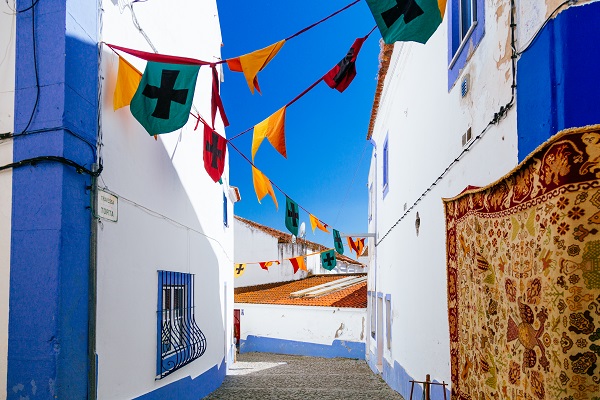

The quality of the hand stitched carpets Arraiolos is well known for. Arraiolos carpets are an important part of the identity of the town. Generations of embroiderers have maintained the traditions of art down through the centuries. Arraiolos carpets may have started with the Arabs during the 12th century. It developed during the 15th century, and hit a peak in the 18th century. Today you can buy, or just learn more about the craft in this charming town.
Coruche
Set on the River Sorraia the market town Coruche is a busy town, heart of the cork industry, surrounded by rice fields and full of great places to dine along the river walk. The vast areas of cork oaks surround Coruche, one of the main cork producers in Portugal. Coruche also has its Corôa bridge (of Roman heritage), the aqueduct of Monte da Barca and various ornate churches.
Mora
Mora is a sweet small set of villages in the headwaters of the cork forests. The town is divided into four charming parishes: Brotas, Cabeção, Mora and Pavia. Spend the day at the beach and aquarium of the Praia Fluvial do Parque Ecológico do Gameiro (Fluvial Beach of Gameiro Ecological Park). Mora is also known for its fishing, and is a culinary destination, with migas stuffing being quite the thing. Brotas is a picture perfect village with little white houses lining a charming main street and square with an impressive church. Pavia is known for its prehistoric dolman, turned into a chapel.
South
Redondo
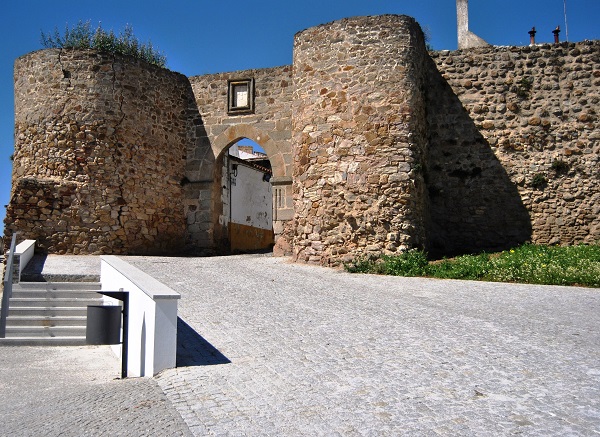

Redondo is known for its wines, pottery and castle. The colorful local pottery is well known all over the region, decorated with floral motifs and traditional country scenes. Redondo is also well known for its fine wine, a controlled designation of origin produced in granite and schist soils, the wine has a balanced taste and an inviting bouquet. The town has a castle with a big square full of cafes.
Serra d’Ossa
Great hiking where you can hike up paths and a new wooden walkway that follows the former lands of the ancient Convent of São Paulo, now an inn with a great local restaurant. Hikers have great views, and ruins of chapels as well as walled orange groves.
Viana do Alentejo
Viana do Alentejo’s unique castle is the town center. The cylindrical towers are unique in all of Portugal. Inside the walls is the parish church, a Manueline structure designed by Diogo Arruda, brother of Francisco de Arruda, architect of the Tower of Belém. The royal emblem of D. Manuel can be admired above the entryway. The town has numerous squares and places to dine.
Alvito
Alvito has a palatial castle, now the Pousada de Alvito. Many of the town's white washed have doors framed by Manueline-style arches. Alvito Castle is a fortified palace from the 15th century. The 16th century church of Nossa Senhora da Assunção is a rare example of Mudejar architecture.
Portel
Rising above the plains, the pretty town of Portel is a bustling medieval market town. A massive example of military construction, the castle was rebuilt under architect Francisco de Arruda (1510) into the shape of an octagon. The keep has large vaulted Gothic rooms, and the walls offer great views over the montados of the region.
East
Évoramonte
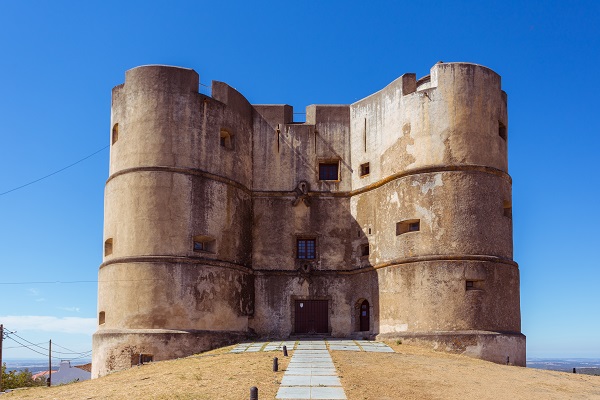

Set high above the Serra d’Ossa, Évoramonte dates back to ancient times. This walled town is very well preserved and full of craft shops and monuments. The Renaissance style fortress was commissioned by Duke of Bragança D. Jaime in the 16th century. It is a unique monument with a regular quadrilateral form, with four imposing circular towers on each corner, surrounded by Manueline sculpted stone ropes. Climb to the top to appreciate the endless views over the region.
Estremoz
Estremoz sits high above wineries and olive groves, its impressive fortifications and medieval castle on full display. The high town is walled with mediaeval buildings around the castle and, outside the ancient city walls, the 18th century bustling center with museums, fairs, eateries and cafes. Estremoz is famous for quarrying world class white marble. Equally famous is the traditional figures that are found in the local craft shops. And its wines are well regarded too, with more than 20 wineries around the walled city.
Vila Viçosa
Vila Viçosa is a rare town with a Renaissance center with a pre-existing medieval urban core. Vila Viçosa is tied to the House of Bragança, the royal and noble Portuguese dynasty founded in 1442. The town was the seat of the great House, and its massive palace, the seat of a ducal court of the Dynasty of Bragança.
West
Almendres Cromlech
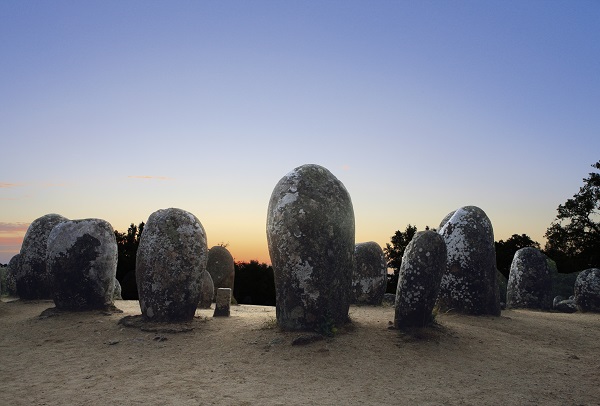

This Neolithic-era monument features many stone pillars standing upright in a circle. The cromlech is made up of 95 stones set in two circles. Some of the stones are decorated with geometric carvings. A little further away is a Menhir which is about 10 feet tall. Recent research found for the most part the stones are in their original place and date the cromlech from the neolithic period.
Montemor-o-Novo
Not far from Evora, Montemor-o-Novo is a big town set under the remains of the walls of a vast ancient castle and ruined palace, with 11 cylindrical towers remaining. The early defensive elements of these walls, such as the barbicans, were reinforced in the 14th century. The rectangular-shaped fortress is protected by two ruined towers from the 12th century.
Vendas Novas
The town of Vendas Novas, north of Montemor-o-Novo is known for its Bifana sandwich. The bifana is a pork steak, cooked in garlic and wine, which is placed inside a toasted papo seco bread. And it is worth the trip!
Santiago de Escoural
The prehistoric rock-paintings of Escoural cave is a Paleolithic-era rock-art and funerary burial site, a singular example of Neolithic Portuguese archaeology, whose preserved art paintings are unique.
Wineries in and around Évora
Évora is a unique place, home to its own wines, cheeses and olive oils. You don’t need to go very far to try the excellent local wines. Évora boasts sunny days and warm temperatures perfect for grapes. The climate of the Evora appellation is Mediterranean, with an average temperature of about 23ºC. Nearby regions are a quick trip, including Estremoz, Montemor and Redondo, with Reguengos de Monsaraz an easy drive.
Cartuxa winery is located in the city. It offers guided tours of the wine cellar, and food and wine tasting of regional products. Cartuxa has undergone several renovations and expansions, preserving the richness of its architecture and traditions. The Adega Cartuxa got its name from the 16th century Mosteiro da Cartuxa (Cartuxa Monastery), which is set right next to the winery and is part of the Eugénio de Almeida Foundation's patrimony.
Fita Preta Vinhos wines reflect the character of their winery, built in palace and wine estates from the 14th century. Fita Preta Vinhos is the perfect blend of tradition and modernization. The winemaking is deep rooted here and the wines reflect the character of their culture and the Alentejo.
Located north of Evora, Quinta Nossa Senhora da Conceição is home to Dona Dorinda organic wines, where they use the biodynamic principles to create a diverse agricultural ecosystem to get a high degree of quality and taste: vineyards, oak forest, olive grove, fruit orchards and livestock.
Quinta de São José da Peramanca is located in the heart of an estate, where you can purchase and prove the authenticity of the wines produced on this property. In this store you can also find a range of selected products from the region such as olive oils, jams and other typical products from the Alentejo.
In addition to the wines, the Quinta has a Páteo and a Chapel (Capela de São José), from the 17th century, which is a true monument.
